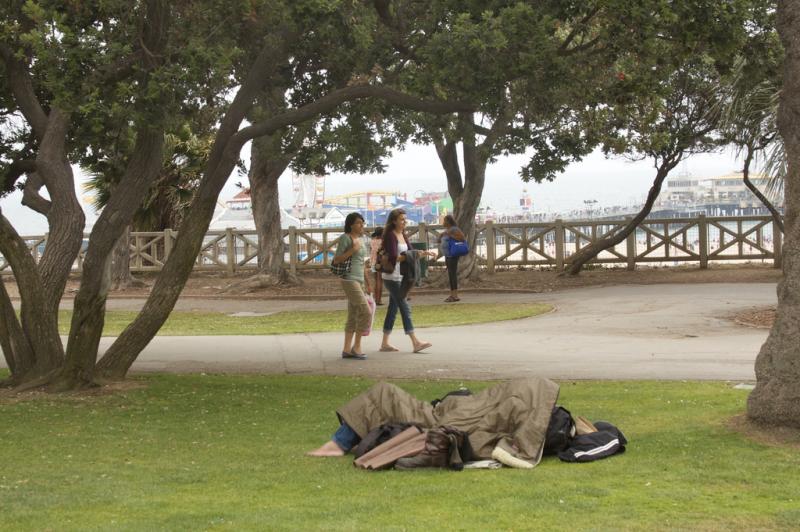Santa Monica's Homeless Population Is Decreasing

The Williams family had been struggling for years, even living out of a van at times, until they found a ray of hope in Santa Monica. In an oceanside community with a large, but decreasing transient population, the family discovered a shelter called Upward Bound House. It was there that the Williams family eventually found permanent housing and along with it, a new life.
The family is a success story in a city that still needs a lot more.
Although the homeless rate in the Santa Monica has dropped by five percent within the past year, there are currently still 742 homeless individuals in the area, according to the city's latest homeless count. That's still in contrast to Los Angeles County, where the homeless population numbers in the tens of thousands and continues to grow.
Santa Monica began conducting homeless counts in 2010 in order to better identify and respond to the homeless population trends. The count is conducted by over 200 volunteers and measures the homeless population at a single-point in time during the night. Homeless individuals in shelters, motels, jails, and hospitals are also included in this count. In the past year the total number dropped from 780 to 742 individuals, and the street count dropped from 380 to 346 individuals.
With information from the count, the city of Santa Monica provides over $2.6 million annually to local nonprofit agencies that work with the homeless to provide health care, substance abuse treatment, interim housing, and permanent supportive housing.
Santa Monica developed a surprisingly cohesive action plan that fostered cooperation between almost every city agency — from law enforcement to economic services. According to Margaret Willis, a human services administrator in Santa Monica, the city set out to develop a vision to transform Santa Monica "into a place where our effective action and compassion end the impact of homelessness on our community." The city quickly established guiding principles and refined the preexisting homeless service system.
One of those goals was to help the homeless find housing in a place where they can stay and thrive, just like the Williams family.
Shelters like Upward Bound House work to help get people off of the streets and provide them with housing. Upward Bound House has helped over 800 families transition from homelessness to permanent housing since it was founded in 1991.
The main goal of the shelter is to get homeless families with underage children off of the streets. "The idea is to have everybody self-sufficient in a certain amount of time," according to Booker Pearson, co-founder of Upward Bound House. The shelter has established various programs that provide financial assistance so that the families can obtain stable housing. Currently, the shelter serves about 200 people everyday, people of all ages and from many different walks of life.
Among these people were the Williams'. The Williams family came to the Upward Bound House during a difficult stretch. Burdened with young children, Pearson's organization was able to help the family gain housing and get off the streets. Now they have found permanent housing and are able to live on their own.
Natasha Guest, an administrator for homeless initiatives in Santa Monica, believes that "as shelters become maximized, that's when you see an increase on the street." As long as shelters such as Upward Bound House continue to have a quick turnaround with people that they help, the homeless population should continue to decrease in coming years. Furthermore, shelters like Upward Bound House may be the reason that the annual homeless count indicates fewer families on the streets.
The other recent intitiative to assist the city's homeless population is the Homeless Liaison Program, incorporated by the police department only one year ago. The program, which is comprised of six dedicated officers, helps to identify the long-term homeless in the area and find them permanent housing. This year, the Santa Monica Police Department will continue to use the Homeless Liaison Program in its daily patrols.
According to Willis, the city will also continue to "coordinate its homeless initiatives through a dedicated unit in the Human Services Division." That is in addition to encouraging more local volunteers to get involved and address homelessness.
The end goal for the city is not just better-looking homeless statistics, but making sure people like the Williams family are not lost in them.
You can reach contributor Kaitlin Propeck here.



